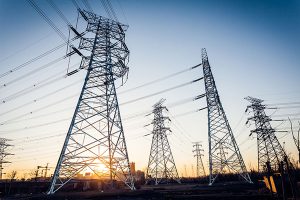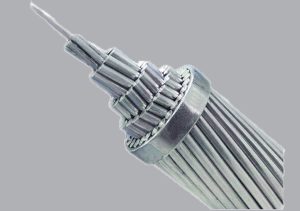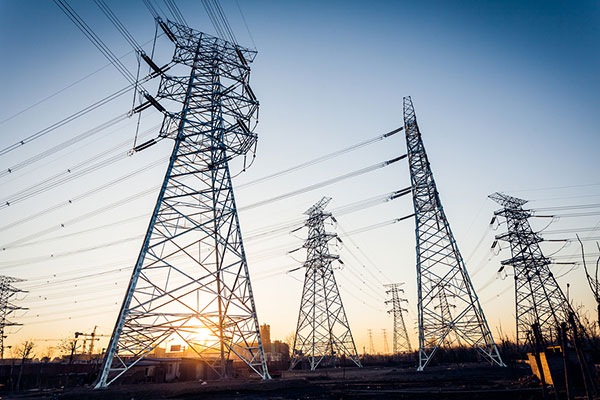A major milestone was reached in the installation of the Shetland high voltage transmission line Link project in the UK with the successful connection of the 320 kV high voltage transmission cable by NKT and two companies, Scottish and Southern Energy (SSEN Transmission).
The following is an introduction to high-voltage transmission cables.
Cables are generally coppered, aluminum, and now aluminum alloy. But the outdoor overhead is generally steel-core aluminum stranded wire, such as high-voltage transmission cable.
The high-voltage line usually refers to transmission lines that carry a voltage of 10KV (including 10KV) or more.
Overhead Line Method
High-voltage transmission in the city generally uses the cable with an insulation layer underground transmission, in the field often uses the tower-bearing overhead line way of transmission.
Now more and more large transmission lines are being built because, for cross-country or cross-ocean, the distance is very far.
And high-voltage cables in High-voltage lines, it is often used for long-distance transmission.
If underground cables are used, especially for long-distance transmission often through complex terrain, the cost and technical requirements will skyrocket.
On the other hand, overhead lines in the air in good heat dissipation conditions, while the air around the underground cable does not flow, difficult to dissipate heat, which largely limits the level of power that can be transmitted by underground cables.

So building this high-voltage transmission cable would be a good fit for this Lan Islands cable connection project.
With the next section of subsea cable being laid, this cable pull-in is an important milestone in Shetland’s first connection to the national grid, helping to ensure the future security of the island’s clean, low-carbon electricity supply.
The cable route will connect 600 megawatts of clean, renewable energy generation.
Also included is the 457 MW Viking Energy wind farm, which when completed will be the most productive onshore wind farm in the UK – supporting the UK and Scotland’s net-zero emissions and energy security goals.
It is well known that both offshore and onshore wind power has been long-standing wind markets of global interest in recent years in terms of power development and sustainable energy production.
Due to the decreasing availability of economically exploitable wind resources on land, there has been a global trend of wind farm construction from land to offshore.
Offshore wind power is the latest frontier in global wind power development because of its abundant resources, high power generation utilization hours, lack of land occupation, and suitability for large-scale development.
Onshore wind farms refer to a complete set of facilities that use the wind on land to obtain electricity, mostly in some ventilated plain areas.
The difference between offshore and onshore wind power
Compared with onshore wind power, the energy efficiency of offshore wind energy resources is 20% to 40% higher than that of onshore wind farms and also has the advantages of no land occupation, high wind speed, less sand and dust, high power, stable operation, and zero dust emission.
It can also reduce the wear and tear of the units and extend the service life of the wind turbines, making them suitable for large-scale development.
However, due to the limitations of the offshore wind scenario, onshore wind power has also been a respected method of power transmission in many countries.
“The installation of subsea cable systems is complex and requires a great deal of planning to achieve this, and NKT worked with subsea cable experts to enable this process to be carried out reliably, safely, and to the highest standards. This second cable campaign marks an exciting step forward for SSEN Transmission and our contractors on this project, and we look forward to completing this phase of the subsea cable campaign in the coming weeks,” SSEN Transmission.

As mentioned above, submarine cables are so easy and fast, so why are there still only a few countries around the world that have mastered this installation technology?
It is because the submarine cable looks simple, but in fact, its installation process is very complex, not to mention the later maintenance and prevention.
Submarine cable laying mainly includes cable routing survey and cleaning, submarine cable laying and flush burial protection in three stages.
The cable laying should control the angle of the cable into the water and the laying tension by controlling the sailing speed of the laying vessel and the cable release speed to avoid damaging the cable due to too small a bending radius or too large a tension.
Among them, when laying in the shallow section, the cable laying vessel should stop at a place 4.5 km from the shore and tug the cable placed on the floating package through the tractor on shore.
Remove the floating package after the cable is onshore so that the cable sinks to the bottom.
When laying the deep-sea section, the cable-laying vessel releases the cable and constantly monitors and adjusts it using underwater monitors and underwater remote control vehicles to control the forward speed and direction of the laying vessel and the speed of laying the cable to avoid damaging the cable by going around uneven areas and rocks.
The cable laying vessel NKT Victoria crew skillfully completed the cable pull-in.
Once secured in the transition joint bays, the offshore cable will be connected to the previously installed high-voltage DC land cable and then to SSEN Transmission’s Kergord HVDC converter station and AC substation.
This is the basic process for cable access in the Lang Islands.
Claes Westerlind, executive vice president and head of NKT’s high voltage plant, said, “We are very pleased that we continue to work well with SSEN Transmission, leveraging our extensive experience in HVDC technology to provide a low carbon electricity supply to the Shetland Islands.” Karlskrona, Sweden.
The Shetland HVDC Link project is expected to be completed in the summer of 2024.
